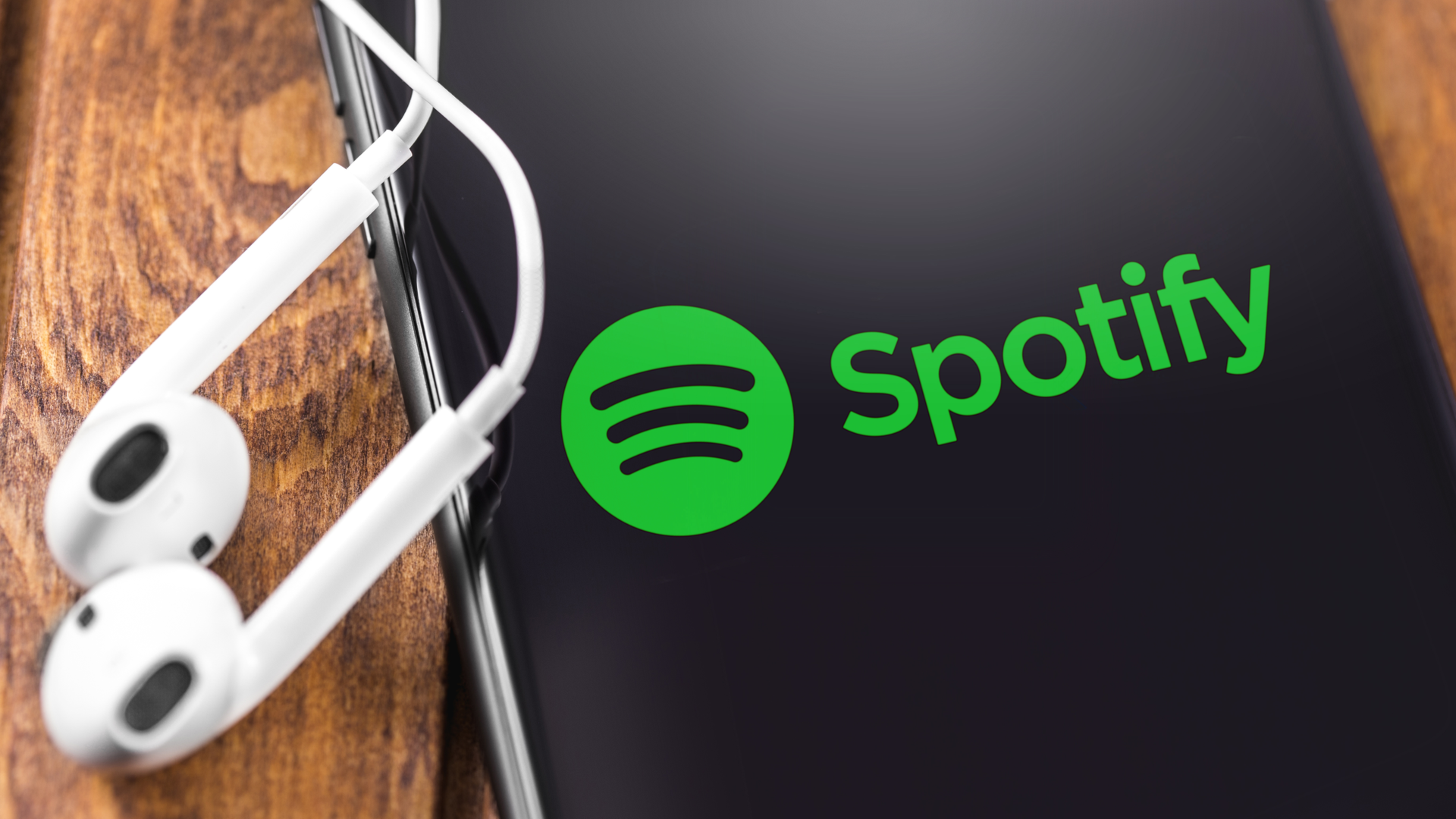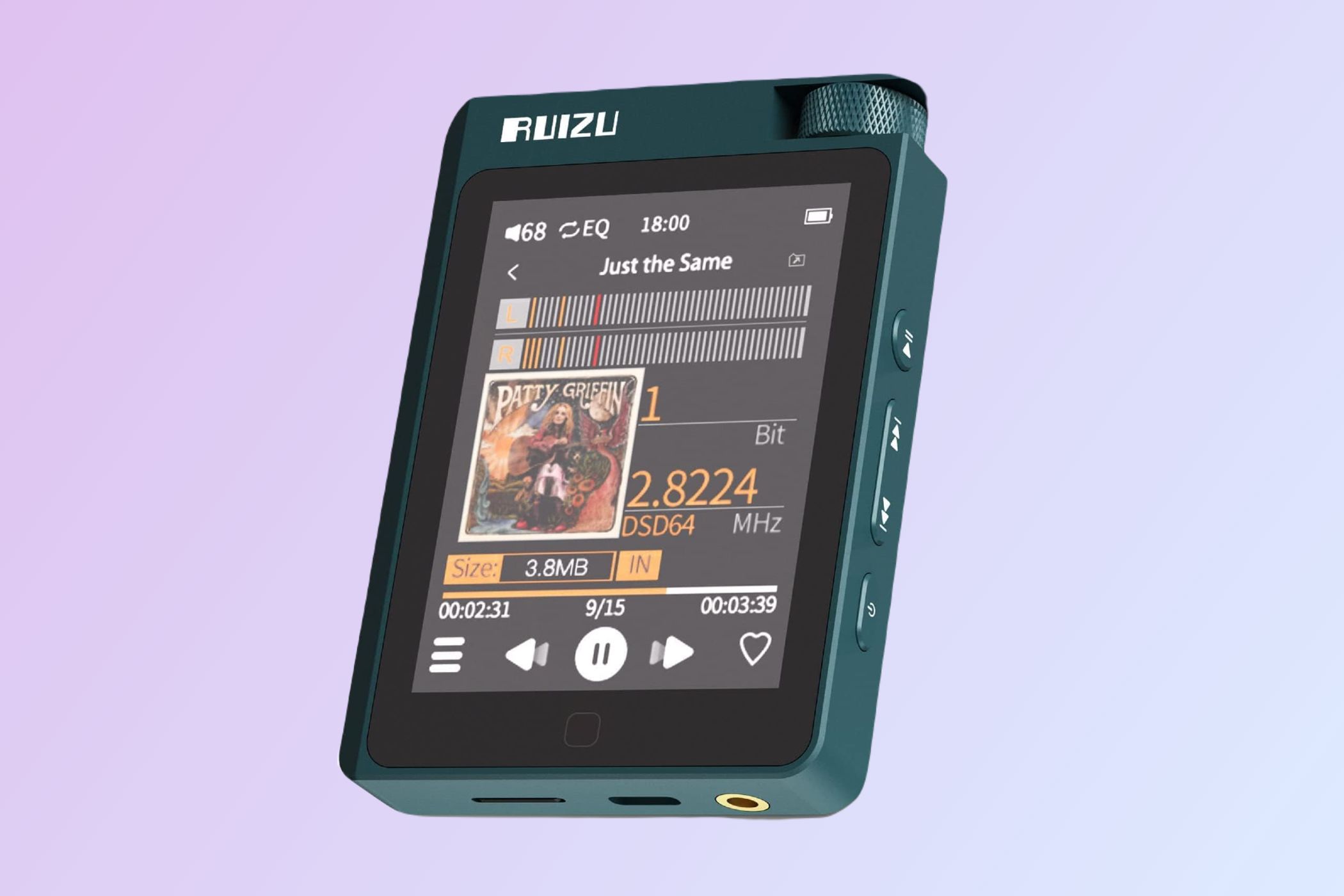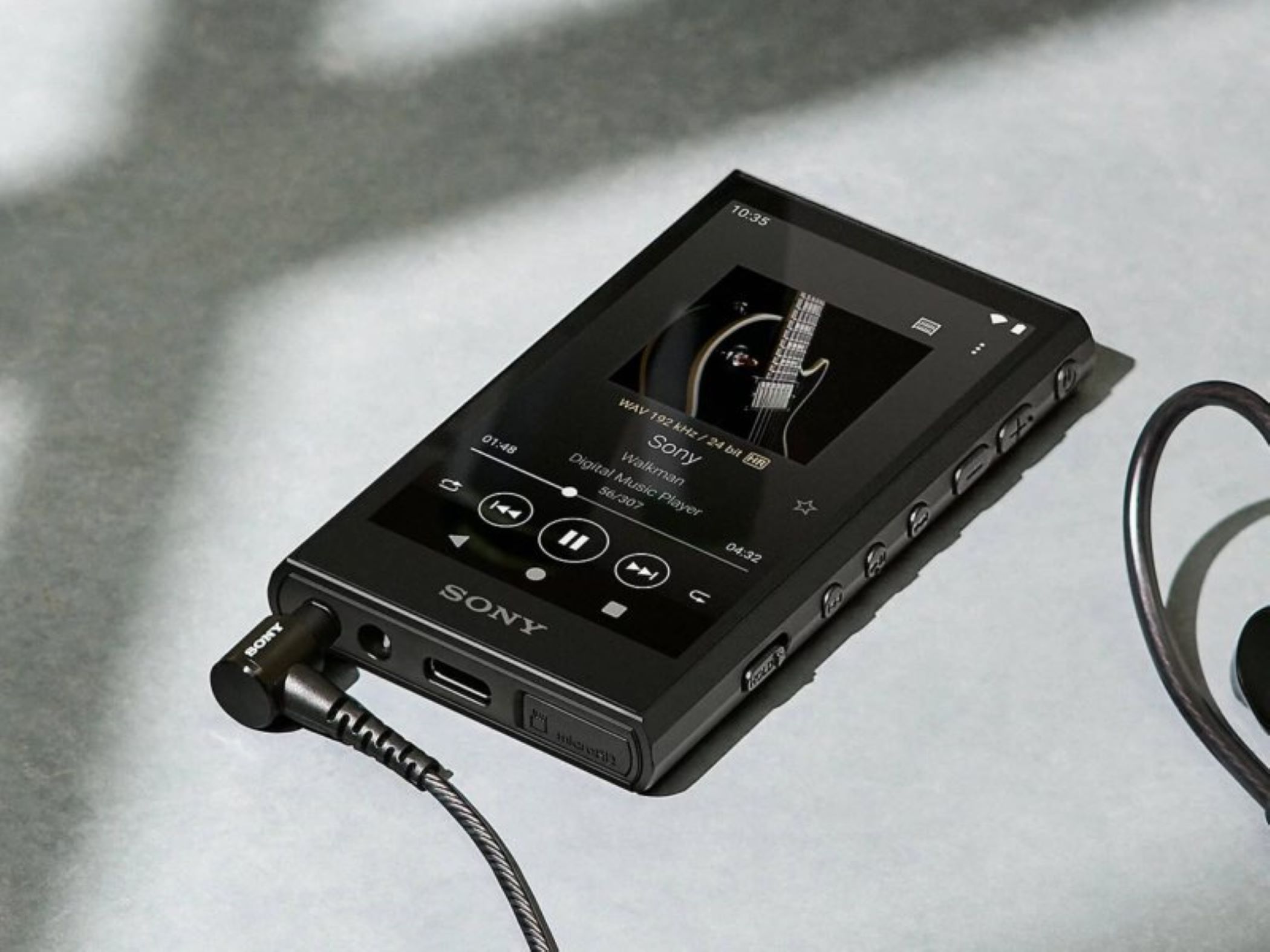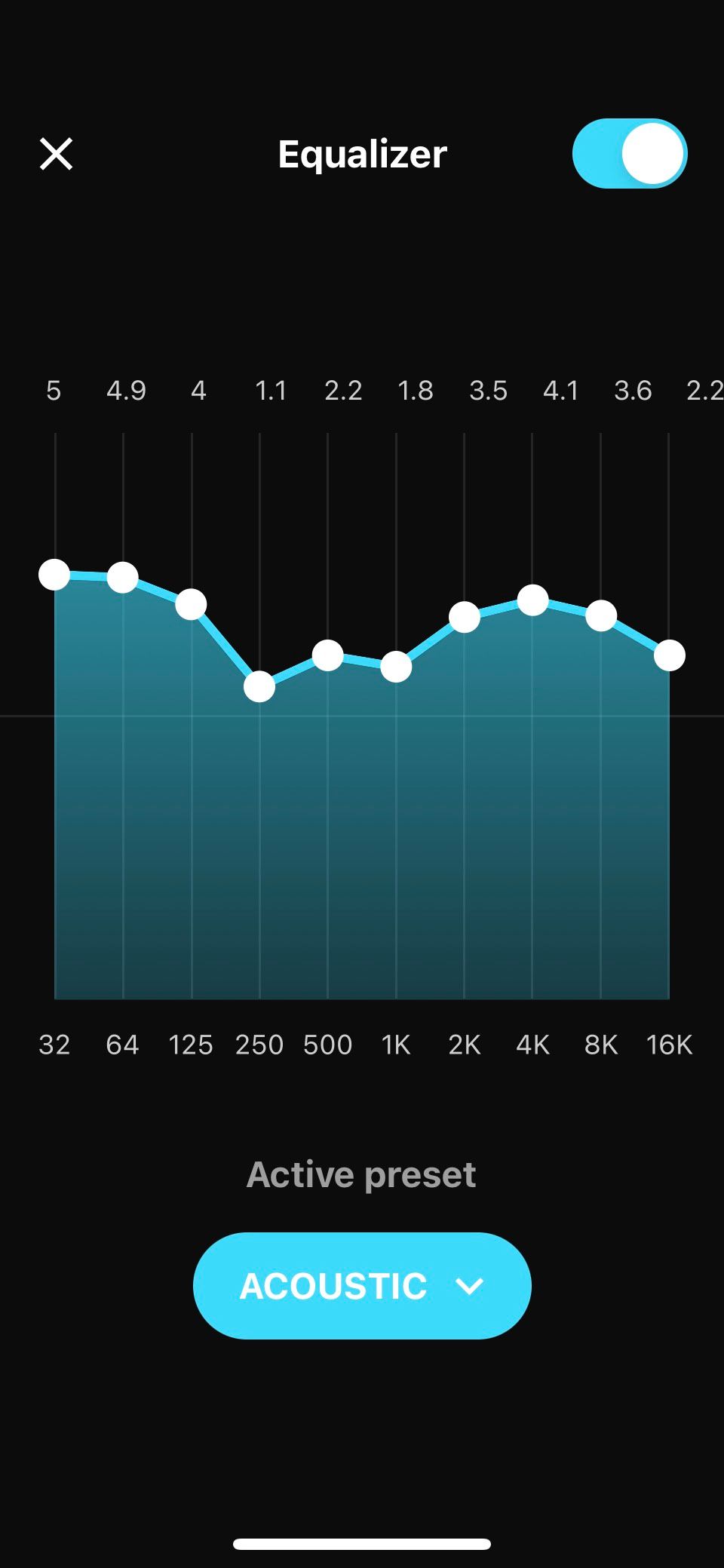Looking for better audio resolution? Here’s why I ditched my smartphone and adopted a DAP instead.
Key Takeaways
- Due to battery and storage limitations, it only makes sense to stream lossy files on smartphones, but lossy files shed information to make files more manageable, which diminishes audio quality.
- DAPs offer more high-resolution lossless audio support, extensive EQ settings, and longer battery life than smartphones.
Did you know the standard music on your smartphone plays from low-quality audio files? Upon learning this, I jumped ship from smartphones to digital audio players (DAPs), especially after understanding the clear benefits concerning sound and functionality.
The Problem With Smartphone Audio
The issue isn’t that smartphones don’t support high-resolution (hi-res) audio. At this point, Apple and Android allow users to download and stream hi-res content. The issue, however, is that smartphones aren’t designed to play hi-res well.
Most of the audio you listen to—whether through Spotify, Apple Music, or another streaming service—offers lossy audio files, like MP3 or Advanced Audio Coding (AAC).
The problem? Lossy files are compressed heavily, meaning they remove bits of information to reduce the file size because it makes them easier to transfer, stream, and download. However, the data removed from lossy files contains sound information. The more they’re compressed, the less they sound like the original recording.
It’s these lossy files that you listen to on the average music library or streaming platform. However, you can access hi-res audio, as most smartphones have functions to download and even stream hi-res or lossless files.
Lossless files also compress audio but do so in a way that doesn’t delete sound information. The result is a smaller file that keeps the original sound almost completely intact.

So why not just use a smartphone if it supports hi-res?
When I was first looking into this, that was my first thought. However, once I started using my smartphone to stream/download hi-res audio, I ran into three major problems:
- Extreme data usage
- Larger file sizes took up too much phone storage
- Fast battery drainage
It all boils down to this: even top-tier smartphones aren’t built to handle hi-res audio alongside all the other phone functions. Hi-res files are too big and require too much data and battery. I even discovered that longer listening sessions caused my iPhone to overheat.
Through trial and error, I decided to try a DAP.
Taking the Leap to Digital Audio Players: 5 Benefits of DAPs
Owning a DAP was a game-changer for someone like myself who sought the highest possible audio quality. It allowed me to download, manage, and listen to a wide range of hi-res formats on a dedicated device with many intuitive features designed to level up casual listening experiences.
I chose Sony’s Walkman NW-A306, which cost me about $350. It’s a compact, all-round hi-res audio player that supports over 10 different file types and offers many great features, a 10-band EQ, and a plethora of connectivity options. While the Walkman NW-A306 is a mid-tier model, price-wise, DAPs begin at around $50 and go as high as $5,000–$۱۰,۰۰۰. But even the most affordable DAPs beat smartphones for many reasons.
Broad Audio Format Support
While smartphones support certain hi-res audio files, like Free Lossless Audio Codec (FLAC), managing them is a major hassle. For example, Apple forces you to manage all FLAC files within the Apple Files app or third-party service, meaning you can’t just stream them. Furthermore, you need an external digital-to-analog converter (DAC) to support true hi-res content.
Apple did introduce its own lossless audio file format, Apple Lossless Audio Codec (ALAC), which works on Apple Music and doesn’t require an external DAC. However, it’s also not a true hi-res format, as it only supports up to 24-bit files. Also, it doesn’t address issues of battery drainage and storage.
DAPs are excellent because they come with larger digital-to-analog conversion (DAC) chipsets. These chipsets support many alternative hi-res audio types, including those that reach up to 32-bit sampling rates, which is the definition of true hi-res.
Feature-Rich EQ Settings
Access to hi-res formats is merely the foundation for the ultimate listening experience. DAPs offer a wide range of amazing audio features that blow smartphones out of the water. For example, smartphones may have EQ settings and presets, but they’re usually limited.
A good DAP truly gives you the power to personalize your music-listening experience, meaning great filters for eliminating muddy bass, sharp highs, and a long list of genre-specific presets.
Plenty of Storage Room DAPs offer great storage dedicated to music and music only. You also get the added benefit of additional phone storage for any non-music-related content.
Depending on the model, a DAP starts with 12–۱۲۰GB of storage space. However, the amount of storage you need depends on the type of audio files you plan to support. For example, an uncompressed WAV file offers the highest audio quality but uses about 10MB per minute, whereas a FLAC file takes up close to 3MB per minute.
If you’re worried about storage, many DAPs offer extensions to enlarge it by 1–۲TB for an added cost.
Great Battery Life
By eliminating the need to support a seemingly infinite number of tools and apps, DAPs support continuous playback that spans at least 12 hours. If you go for a higher-quality device, you can find options that last 72 hours—no problem.
Zero Distraction Listening
The four benefits listed above are why I decided to make the initial switch. However, the largest reason why I stuck with my DAP was for the distraction-free listening experience.
Smartphones are anything but calming, pushing a flurry of notifications which causes users a degraded listening experience. After switching to a DAP, I discovered an entirely different relationship with my music.
With DAPs, when you’re listening, you’re listening. You don’t have to worry about your smartphone pinging and buzzing, meaning you enjoy the high-quality experience to a greater degree.
What About DAP Streaming?
Many hear the term DAP and assume I’m referencing some old MP3 player or a clunky Walkman. Contrary to belief, DAPs have come a long way. Now, they offer listening experiences on par with any smartphone.
Most offer speedy Wi-Fi connections and extensive music-oriented app libraries, meaning users can download streaming services, like Spotify and SoundCloud. However, remember you’ll need to download a streaming service that allows you to stream with your desired audio format. Spotify, for example, doesn’t yet offer lossless audio.
The Future of Digital Audio
For the sake of transparency, when I’m on the go I still find myself listening to music on my iPhone. However, for serious listening sessions DAPs offer unbeatable quality, features, versatility, and storage.
Bottom line: Don’t forsake a one-trick pony, at least for now.
As smartphones evolve to obtain greater storage, battery life, and hi-res audio file support, one day there might be little reason to invest in a separate device. However, that time is a long way off, and smartphones simply aren’t advanced enough to power hi-res audio.




دیدگاهتان را بنویسید